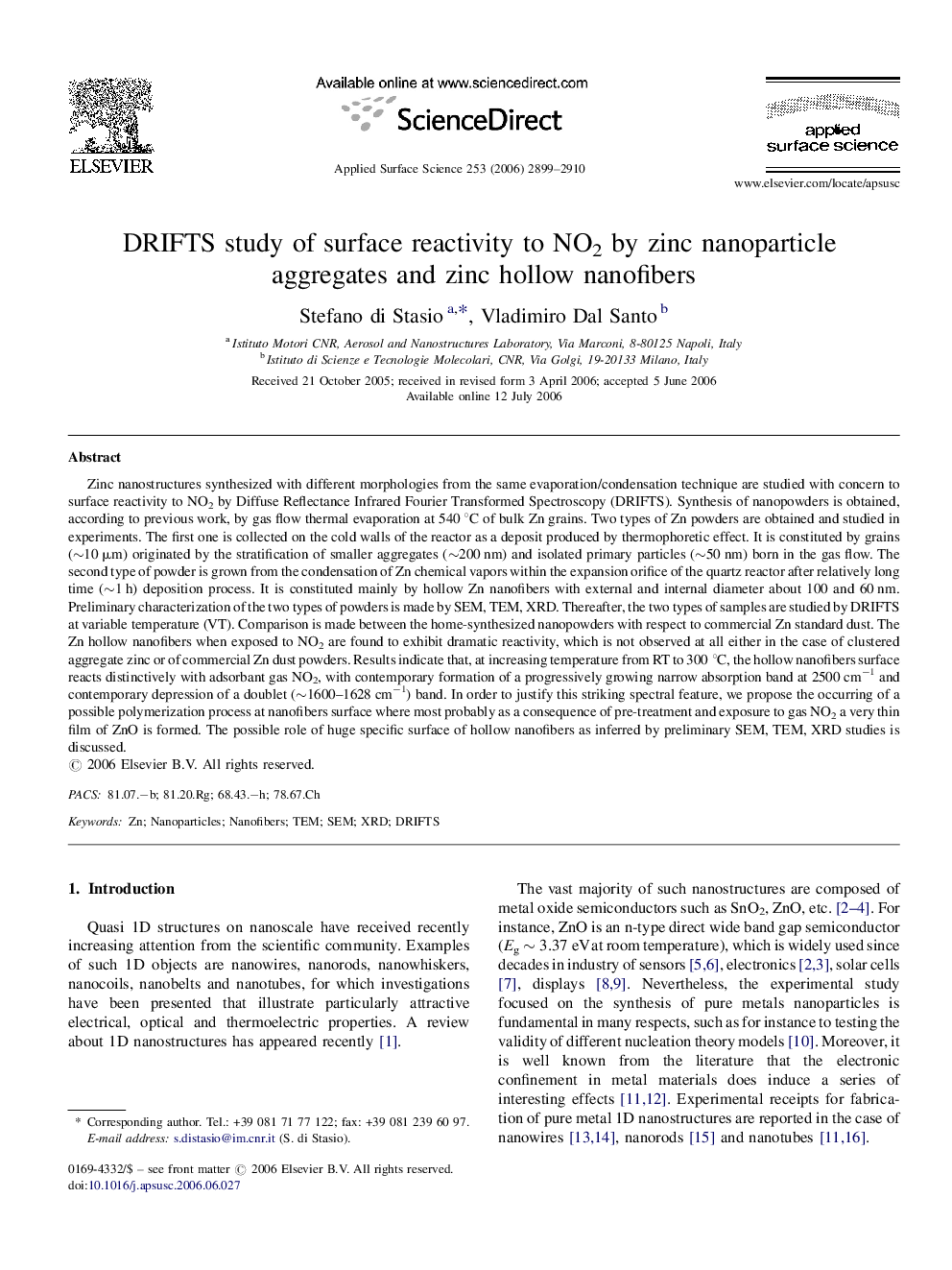| کد مقاله | کد نشریه | سال انتشار | مقاله انگلیسی | نسخه تمام متن |
|---|---|---|---|---|
| 5369981 | 1388465 | 2006 | 12 صفحه PDF | دانلود رایگان |

Zinc nanostructures synthesized with different morphologies from the same evaporation/condensation technique are studied with concern to surface reactivity to NO2 by Diffuse Reflectance Infrared Fourier Transformed Spectroscopy (DRIFTS). Synthesis of nanopowders is obtained, according to previous work, by gas flow thermal evaporation at 540 °C of bulk Zn grains. Two types of Zn powders are obtained and studied in experiments. The first one is collected on the cold walls of the reactor as a deposit produced by thermophoretic effect. It is constituted by grains (â¼10 μm) originated by the stratification of smaller aggregates (â¼200 nm) and isolated primary particles (â¼50 nm) born in the gas flow. The second type of powder is grown from the condensation of Zn chemical vapors within the expansion orifice of the quartz reactor after relatively long time (â¼1 h) deposition process. It is constituted mainly by hollow Zn nanofibers with external and internal diameter about 100 and 60 nm. Preliminary characterization of the two types of powders is made by SEM, TEM, XRD. Thereafter, the two types of samples are studied by DRIFTS at variable temperature (VT). Comparison is made between the home-synthesized nanopowders with respect to commercial Zn standard dust. The Zn hollow nanofibers when exposed to NO2 are found to exhibit dramatic reactivity, which is not observed at all either in the case of clustered aggregate zinc or of commercial Zn dust powders. Results indicate that, at increasing temperature from RT to 300 °C, the hollow nanofibers surface reacts distinctively with adsorbant gas NO2, with contemporary formation of a progressively growing narrow absorption band at 2500 cmâ1 and contemporary depression of a doublet (â¼1600-1628 cmâ1) band. In order to justify this striking spectral feature, we propose the occurring of a possible polymerization process at nanofibers surface where most probably as a consequence of pre-treatment and exposure to gas NO2 a very thin film of ZnO is formed. The possible role of huge specific surface of hollow nanofibers as inferred by preliminary SEM, TEM, XRD studies is discussed.
Journal: Applied Surface Science - Volume 253, Issue 5, 30 December 2006, Pages 2899-2910